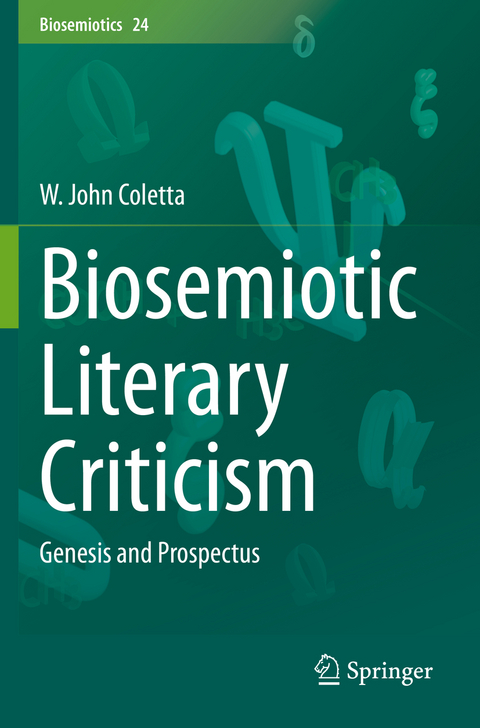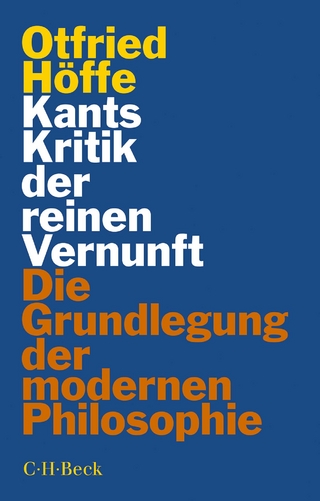
Biosemiotic Literary Criticism
Springer International Publishing (Verlag)
978-3-030-72497-9 (ISBN)
This volume is based to a large extent on the understanding of biosemiotic literary criticism as a semiotic-model-making enterprise. For Jurij Lotman and Thomas A. Sebeok, "nature writing is essentially a model of the relationship between humans and nature" (Timo Maran); biosemiotic literary criticism, itself a form of nature writing and thus itself an ecological-niche-making enterprise, will be considered to be a model of modeling, a model of nature naturing. Modes and models of analysis drawn from Thomas A. Sebeok and Marcel Danesi's Forms of Meaning: Modeling Systems Theory and Semiotic Analysis as well as from Timo Maran's work on "modeling the environment in literature," Edwina Taborsky's writing on Peircean semiosis, and, of course, Jesper Hoffmeyer's formative work in biosemiotics are among the most important organizing elements for this volume.
W. John Coletta, Ph.D., professor emeritus of English at the University of Wisconsin-Stevens Point, USA, is a former Vice President (2009) and President (2010) of the Semiotic Society of America. He currently sits on the Editorial Board of The American Journal of Semiotics. Professor Coletta also is a peer-reviewer for the journal entitled ISLE: Interdisciplinary Studies in Literature and Environment (the official journal of the Association for the Study of Literature and Environment) and for the journal Semiotica. Professor Coletta's research interests include, besides biosemiotic literary criticism, Peircean semiotics, physiosemiotics, and cognitive semiotics. He is founder and CEO of INT3RP INC, a company designed to provide semiotic services in several domains, from marketing and branding semiotics to medical semiotics and cognitive semiotics.
Chapter 1: Introduction: The Genesis of Biosemiotic Literary Criticism: How the Future "Presents" the Past.- Chapter 2. Modeling Environments in Literature and Literary Criticism.- Chapter 3. Evolutionary Approaches to Biosemiotic Literary Criticism.- Chapter 4. Communicative Approaches to Biosemiotic Literary Criticism.- Chapter 5. Hierarchical Approaches to Biosemiotic Literary Criticism.- Chapter 6. Significational Approaches to Biosemiotic Literary Criticism.- Chapter 7. Analogical Approaches to Biosemiotic Literary Criticism.- Chapter 8. Epilogue: The Poet as Scientist.
| Erscheinungsdatum | 27.08.2022 |
|---|---|
| Reihe/Serie | Biosemiotics |
| Zusatzinfo | XIII, 271 p. 27 illus., 16 illus. in color. |
| Verlagsort | Cham |
| Sprache | englisch |
| Maße | 155 x 235 mm |
| Gewicht | 444 g |
| Themenwelt | Geisteswissenschaften ► Philosophie ► Erkenntnistheorie / Wissenschaftstheorie |
| Geisteswissenschaften ► Philosophie ► Geschichte der Philosophie | |
| Geisteswissenschaften ► Philosophie ► Philosophie der Neuzeit | |
| Sozialwissenschaften ► Pädagogik | |
| Schlagworte | Cultural Criticism • form of nature writing • model of modeling • model of nature naturing • nature-text |
| ISBN-10 | 3-030-72497-2 / 3030724972 |
| ISBN-13 | 978-3-030-72497-9 / 9783030724979 |
| Zustand | Neuware |
| Informationen gemäß Produktsicherheitsverordnung (GPSR) | |
| Haben Sie eine Frage zum Produkt? |
aus dem Bereich

![Was heißt Denken?. Vorlesung Wintersemester 1951/52. [Was bedeutet das alles?] - Martin Heidegger](/media/113619842)
